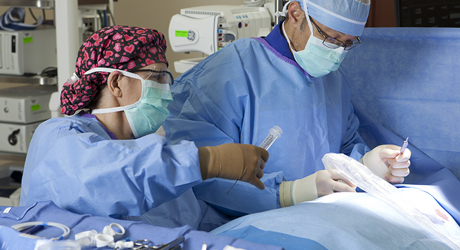Primary Liver Cancer Causes And Treatment
Primary liver cancer causes and treatment. A malignant tumor begins with an unhealthy cell. The exact reason why a cell becomes malignant is unclear. It is thought that "something" changes certain genes or damages them in the cell. This causes the cell to become unhealthy and multiplies 'uncontrolled'.
Most people who develop a primary liver cancer have one or more of the following "risk factors" which make the liver cells more susceptible to malnourishment:
Cirrhosis. This is a condition that causes liver 'larynx'. It tends to slow down. There are still several other causes of cirrhosis. Note: most people with cirrhosis do not develop cancer - it occurs only in a small number of people with cirrhosis.
A long time after infection with hepatitis B or C virus. It usually takes 20-30 years after you first get infected before developing primary liver cancer. Hepatitis B or C did not occur much in the Netherlands, but nowadays more often than before. Worldwide, however, such an infection occurs, especially in Asia and Africa. Many young children in these areas are infected with hepatitis B virus. This is why primary liver cancer is common cancer among relatively young people in these areas.
Get into poisons. For example, aflatoxin is known to occur in some food products (for example peanuts), mainly in developing countries.
Some disorders that cause a sustained inflammation of the intestine increase the risk of developing a cholangiocarcinoma (an unusual form of primary liver cancer). For example, ulcerative colitis. It happens rarely.
There is some evidence that smoking increases the risk of developing primary liver cancer.
A parasitic infection that predominantly occurs in Africa and Asia increases the risk of developing a cholangiocarcinoma.
What are the treatment options for primary liver cancer?
The most commonly used treatments used in primary liver cancer are surgery and chemotherapy. There are also other methods. The treatment that is advised separately at least depends on several factors such as:
Most people who develop a primary liver cancer have one or more of the following "risk factors" which make the liver cells more susceptible to malnourishment:
Cirrhosis. This is a condition that causes liver 'larynx'. It tends to slow down. There are still several other causes of cirrhosis. Note: most people with cirrhosis do not develop cancer - it occurs only in a small number of people with cirrhosis.
A long time after infection with hepatitis B or C virus. It usually takes 20-30 years after you first get infected before developing primary liver cancer. Hepatitis B or C did not occur much in the Netherlands, but nowadays more often than before. Worldwide, however, such an infection occurs, especially in Asia and Africa. Many young children in these areas are infected with hepatitis B virus. This is why primary liver cancer is common cancer among relatively young people in these areas.
Get into poisons. For example, aflatoxin is known to occur in some food products (for example peanuts), mainly in developing countries.
Some disorders that cause a sustained inflammation of the intestine increase the risk of developing a cholangiocarcinoma (an unusual form of primary liver cancer). For example, ulcerative colitis. It happens rarely.
There is some evidence that smoking increases the risk of developing primary liver cancer.
A parasitic infection that predominantly occurs in Africa and Asia increases the risk of developing a cholangiocarcinoma.
What are the treatment options for primary liver cancer?
The most commonly used treatments used in primary liver cancer are surgery and chemotherapy. There are also other methods. The treatment that is advised separately at least depends on several factors such as:
- The precise place of the primary tumor in the liver.
- The stage of the cancer (how big is the tumor and whether it has sown).
- Your overall health. More specifically, the condition of your liver and liver function (many people with primary liver cancer also have poor liver function due to cirrhosis).
- Of course, you need to talk to your specialist. This can explain the pros and cons of the various treatment methods, the possible side effects and other information about the tumor you have.
- In some cases, the treatment aims to cure the cancer. The best chance of cure for primary liver cancer is when it has been diagnosed and treated at an early stage. (Doctors often use the word "remission" instead of "cure." Remission means there is no evidence of cancer after treatment. In case of remission you can be cured, but in some cases, the cancer occurs within a few months or years back. This is why doctors sometimes prefer not to cure the word).
- In other cases, the treatment aims to regulate the cancer. If healing is not realistic, treatment is often possible to reduce growth and sowing so that the process is less rapid. This can ensure that you have no complaints about a while.
- In some cases, the treatment aims to reduce the symptoms ("palliative care"). For example, if the cancer is advanced you need treatments like painkillers or other treatments to reduce your complaints. Some treatments can be used to reduce the tumor so that complaints are reduced.
*Image source : Cancer Treatment Centers of America
References :

Post a Comment for "Primary Liver Cancer Causes And Treatment"